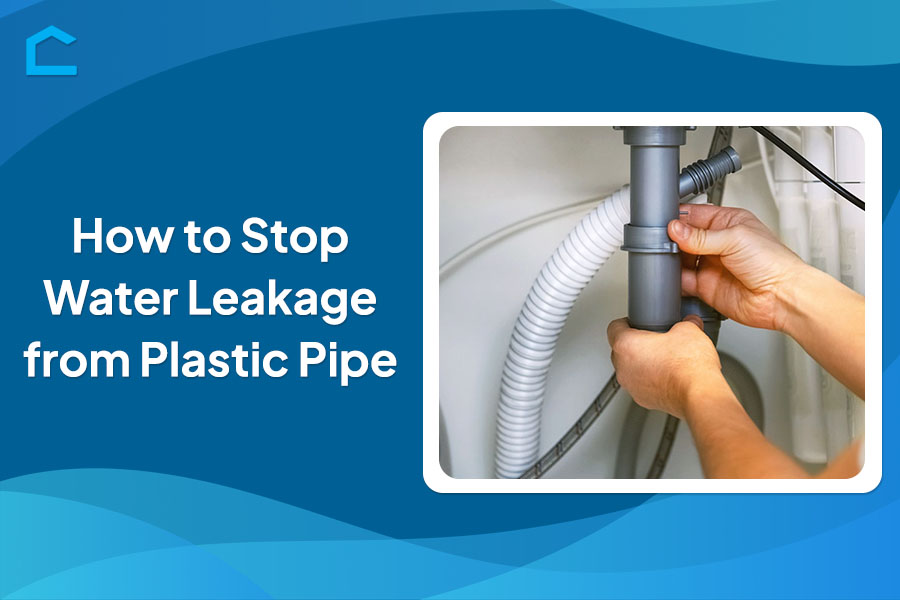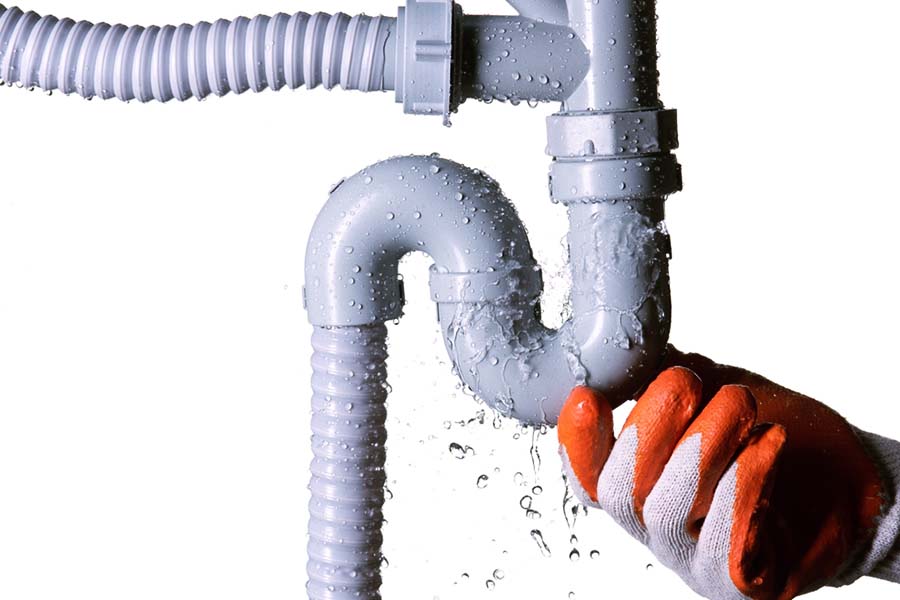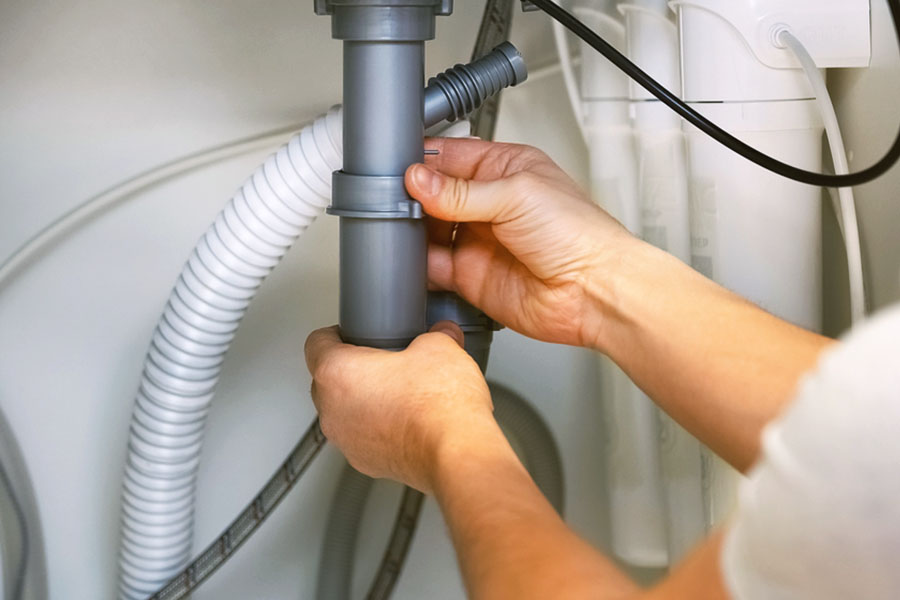How to Stop Water Leakage From Plastic Pipe

Water leakage from plastic pipes can be a frustrating problem, often resulting from wear and tear, improper installation, or even accidental damage. Fortunately, several effective methods can help you learn how to stop water leakage from plastic pipe, ranging from simple DIY fixes to more complex repairs.
In this comprehensive guide, we’ll explore the common causes of plastic pipe leaks and various repair techniques, including patching, couping, etc.
You will also find step-by-step instructions on how to identify and locate the source of the leak. Join us to take prompt action to stop water leakage and prevent further damage to your property!

Source: shutterstock.com / Photo Contributor: showcake
Identifying the Source of the Leak
The first step for how to fix a leaking pipe in a wall, is to identify the source of the leak. This step is crucial to minimize damage and save on repair costs. Look for signs like moisture, discoloration, or bulges along the pipes.
To pinpoint hidden leaks, you can apply soapy water and watch for bubbles where the pipe leaks. For pipes behind walls or underground, you may use specialized tools such as moisture meters or leak cameras.
Knowing the exact location of the leak allows you to plan targeted repairs efficiently. This saves time and ensures the problem is fixed correctly the first time.
Immediate leak repairs
If you have a leaking pipe, you can try a couple of temporary solutions. First, apply a pipe repair clamp or epoxy putty directly over the leak. If you need a quick fix, tightly wrap the leak with waterproof adhesive tape. However, these are just band-aid fixes.
We advise you to plan for proper repairs or pipe replacement soon to fully resolve the leak. Temporary fixes might stop active leaking and water damage, but they won’t last long. You can consult with a plumber for comprehensive pipe repair or replacement to ensure a lasting solution.
How to Stop Water Leakage From Plastic Pipe
Promptly addressing leaks is essential to prevent water damage, avoid extensive water damage restoration, and maintain your plumbing system’s integrity. Here are our possible effective methods to stop leaks:
1. Using pipe repair tape
One method to stop a leak in a plastic pipe is to use pipe repair tape. First, ensure the area around the leak is clean and completely dry. Any moisture, dirt, or debris will prevent the tape from properly adhering. Then, tightly wrap the self-adhesive repair tape around the leaking section of the pipe.
You need to overlap each wrap by about half the width of the tape. Apply at least three or four complete layers, pressing firmly as you wrap to create a good seal. You should smooth out any wrinkles or gaps in the tape for better leak prevention.

Source: shutterstock.com / Photo Contributor: RATT_ANARACH
2. Applying epoxy putty
You can use epoxy putty to seal leaks in plastic pipes. Start by mixing the two putty components according to the manufacturer’s instructions, ensuring the correct ratios for proper curing. Thoroughly knead the materials until fully combined.
Next, firmly pack the putty over the leaking area of the pipe. Mold and shape it to extend slightly beyond the leak to ensure complete coverage. We recommend applying a thick layer so the putty effectively seals the opening when it cures.
Also, allow the epoxy putty to cure for the recommended time before using the repaired pipe. This will allow it to harden fully into a waterproof seal.
3. Using a pipe repair clamp
Another option to consider is using a pipe repair clamp if you’re dealing with a leak. This clamp works by compressing a rubber gasket liner over the leak to seal it.
Before applying the clamp, you must ensure the area around the leak is clean. Remove any dirt, rust, or debris from the pipe’s surface to allow the gasket to seal directly against it.
Once clean, center the gasket liner over the leaking area. Then, position the clamp over the liner. Using a wrench or clamp tool, tighten the clamp firmly and evenly until it is securely in place. This gasket compression creates a water-tight seal over the leak, effectively resolving the issue.
4. Replacing the damaged section
When you encounter severe pipe damage, sometimes the best solution is to replace the entire damaged section. First, measure and mark the area you need to replace. Use a pipe cutter to make clean, straight cuts on both ends – avoid rough sawing for precision.
Next, purchase a replacement pipe section of the same material and size, along with any needed fittings or connectors. You can choose between compression fittings or solvent welds for connecting the new pipe sections. We advise you to follow the product instructions carefully to properly join and secure the replacement pipe section.
After completing the replacement, test the repair thoroughly for any remaining leaks before putting the pipe back into service. This ensures the repair is effective and durable.

Source: shutterstock.com / Photo Contributor: Belkina Margarita
When to Call a Professional
If you notice minor plastic pipe leaks at home, you might be tempted to fix them yourself. However, we recommend calling a professional plumber for severe leaks. This is particularly important for leaks in hard-to-reach places or if there are multiple leaks.
Large leaks, especially those within walls or ceilings, require specialized tools and expertise that plumbers possess. They can accurately diagnose and repair issues without causing additional damage.
Multiple leaks often indicate a systemic problem, possibly due to aging pipes or improper installation. Due to this, expert evaluation is crucial to identify the root cause and implement a comprehensive solution.
Even for a single leak, it’s wise to rely on professionals if you’re unsure about repairing correctly. Improper fixes can lead to immediate water damage and future leaks.
Conclusion
Dealing with water leakage from plastic pipes can be challenging, but it’s essential to know how to stop water leakage from plastic pi[e to prevent further damage to your property. From simple DIY fixes to professional interventions, our effective methods might stop leaks.
By identifying the source of the leak and implementing the appropriate repair strategy, you can safeguard your plumbing system’s integrity and avoid costly repairs down the line. Remember, when in doubt, don’t hesitate to seek assistance from a professional plumber to ensure the job is done right the first time.
With the right approach, you can tackle water leakage issues confidently and maintain a leak-free home environment. Don’t delay—address leaks today!
